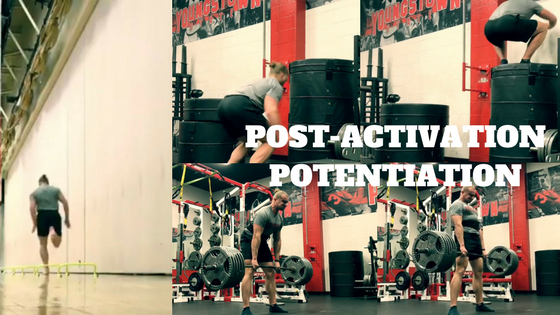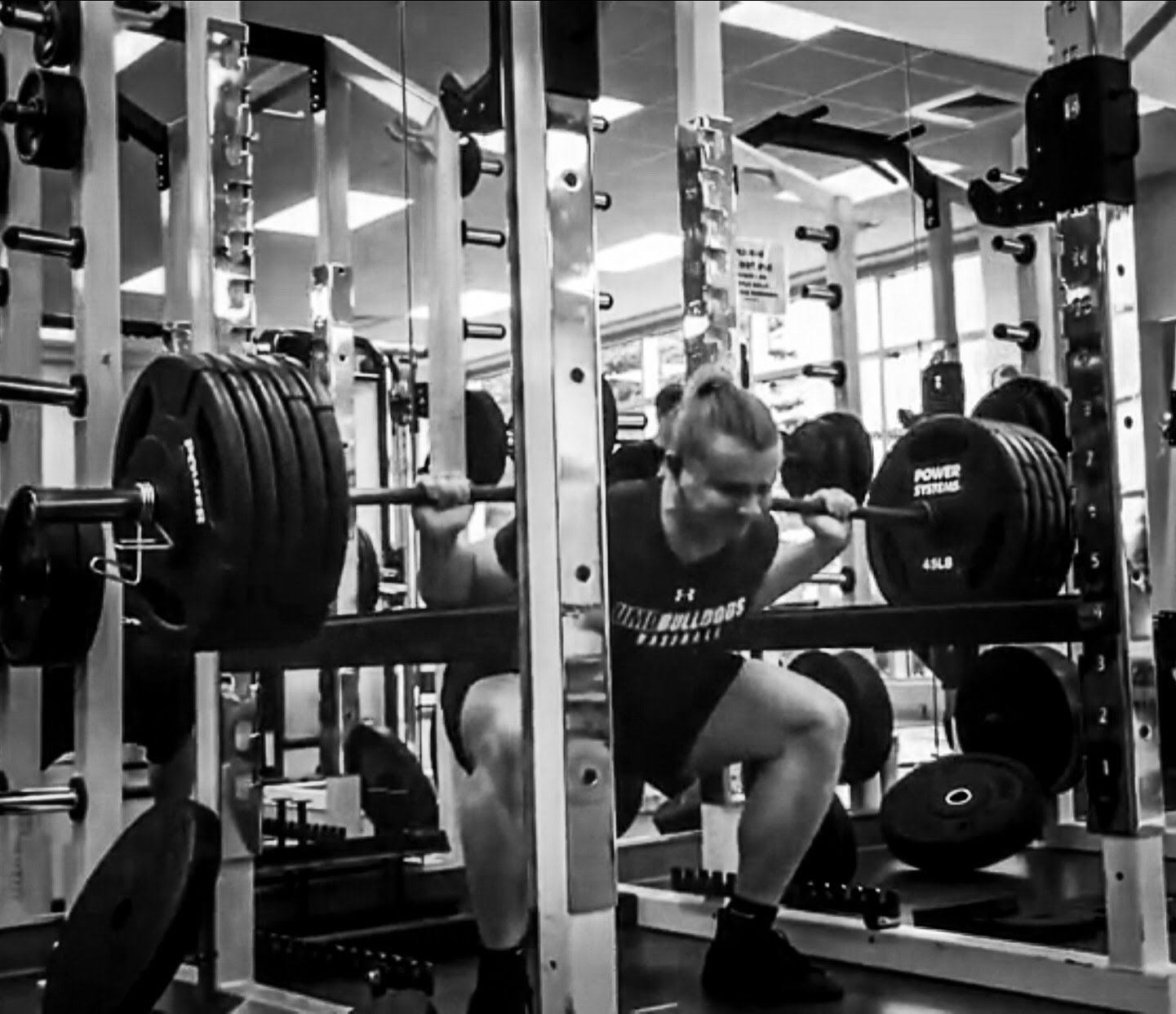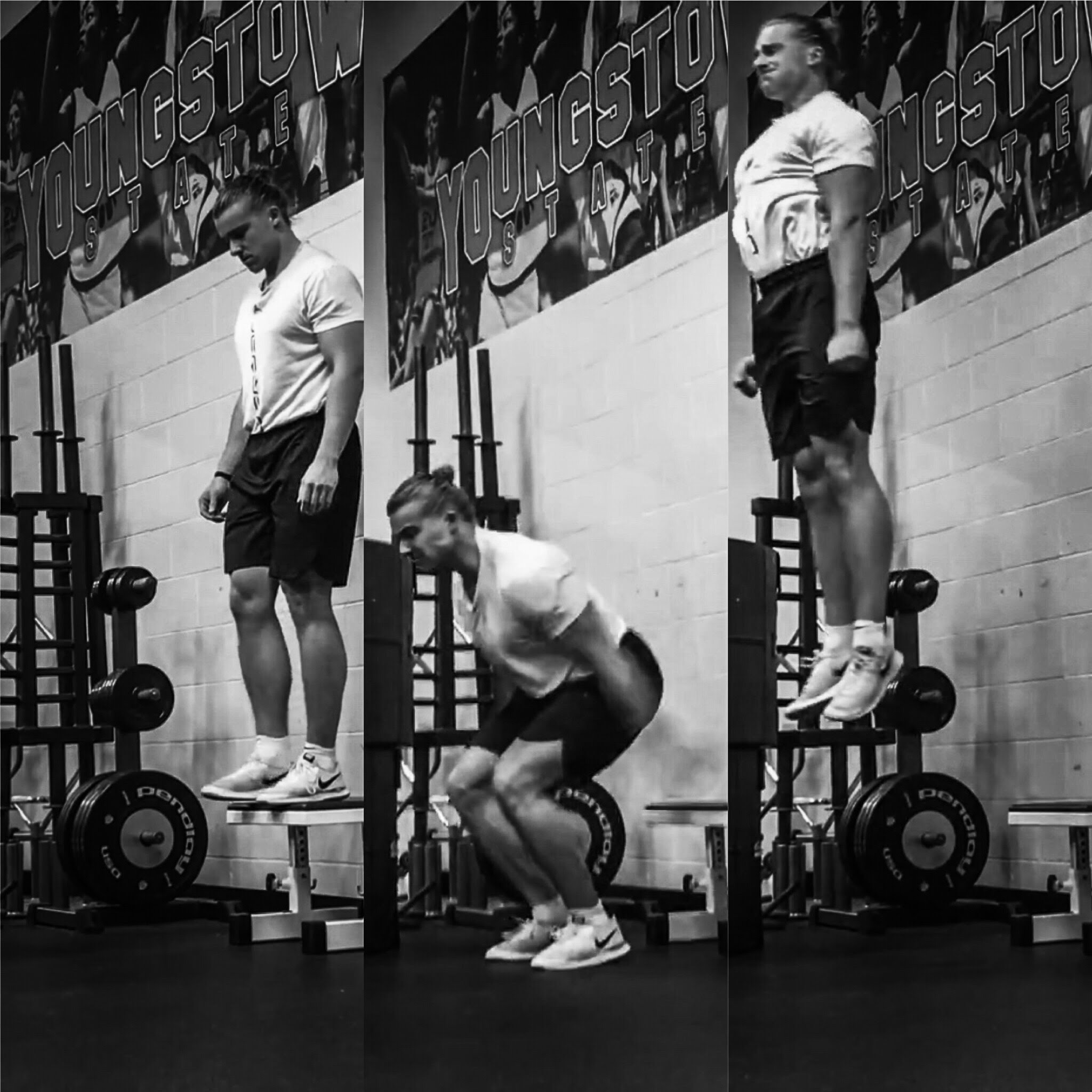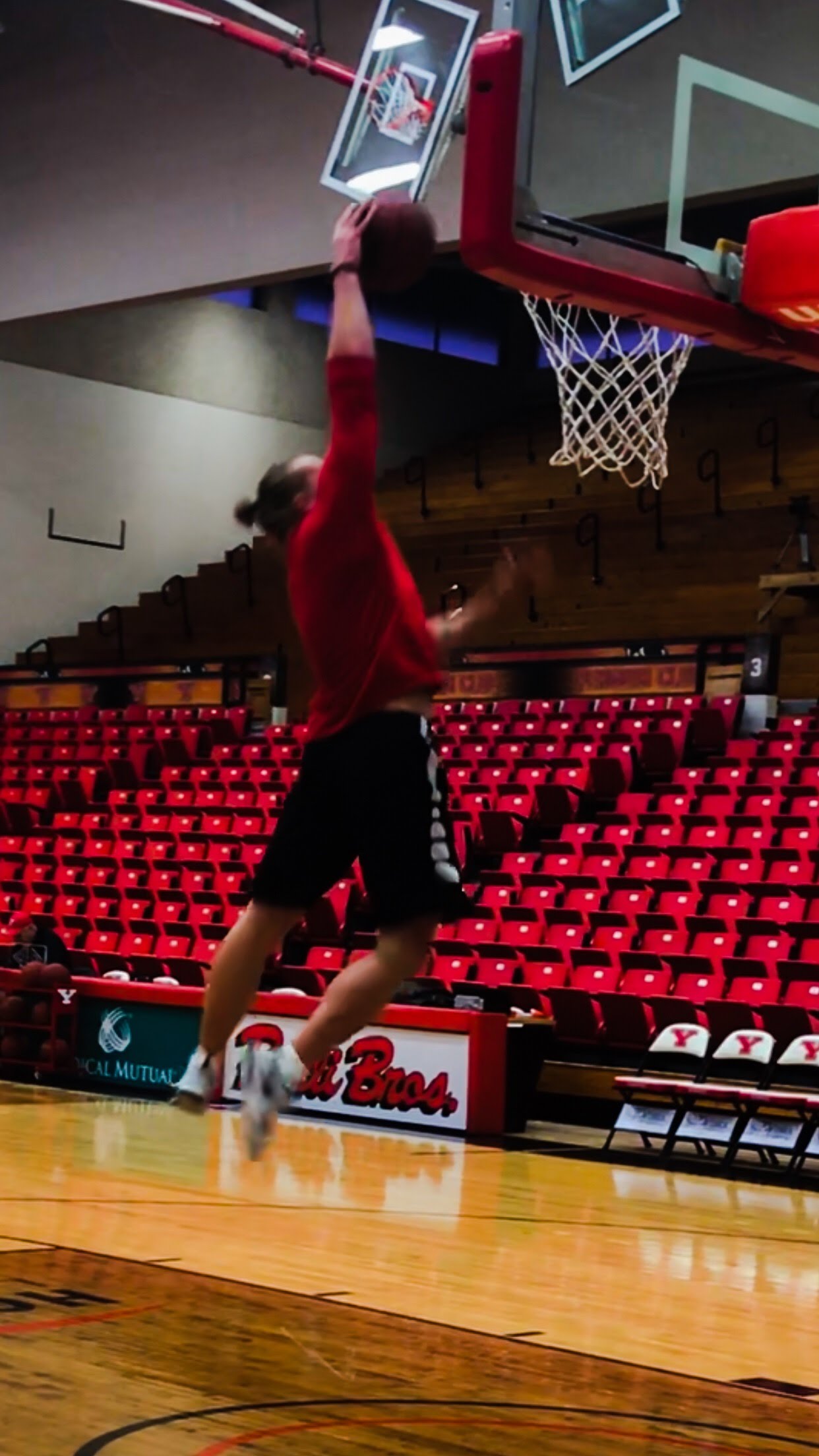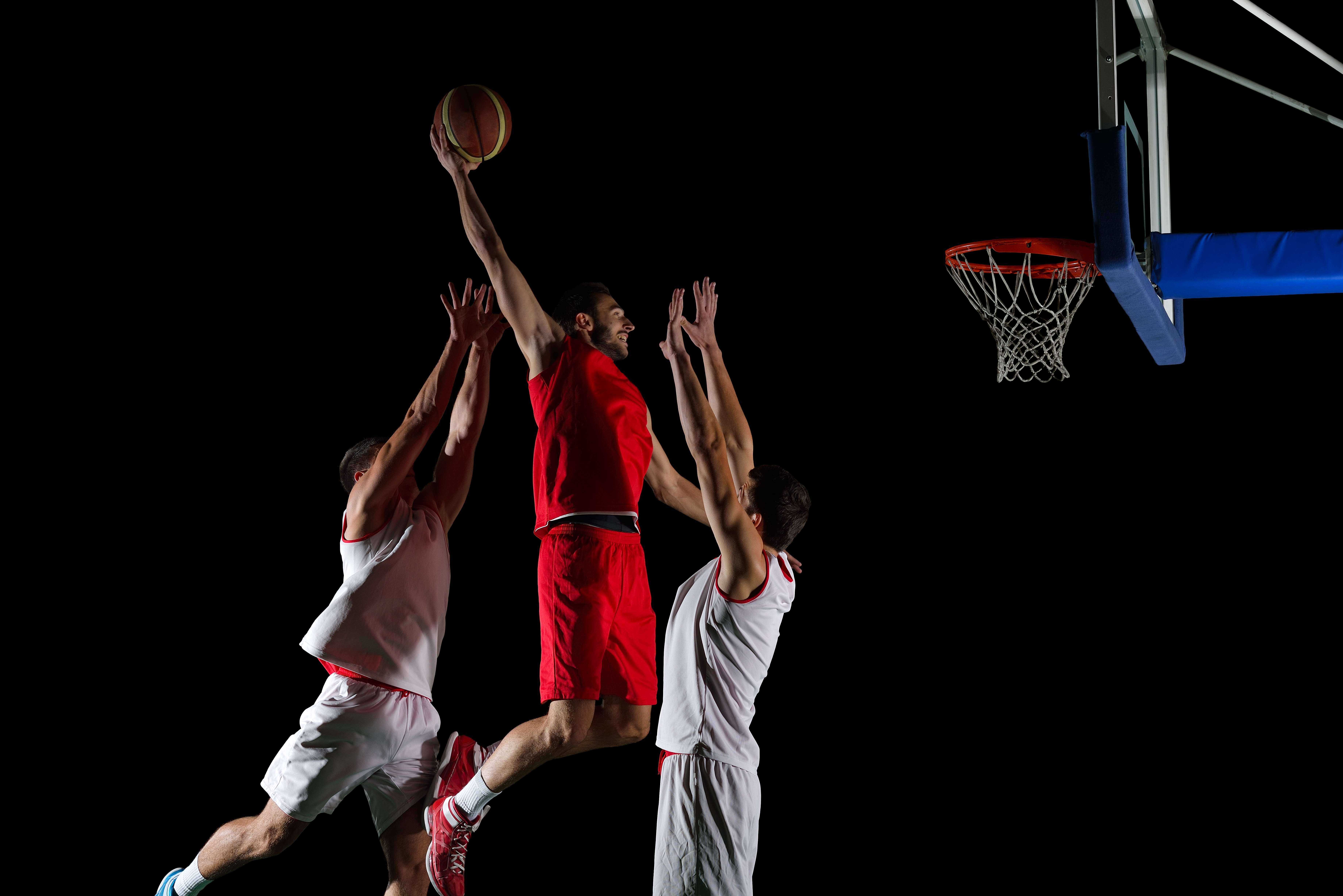Potentiation. Noun. The increase in strength of nerve impulses along pathways that have been used previously, either short-term or long-term.
You spend months trying to jump higher and increase strength numbers. What if you could be stronger and more explosive every time you entered the gym?
Enter Post-Activation Potentiation (PAP):
PAP is the phenomenon by which muscle force is enhanced as a result of its contractile history [1].
Loading muscles with high resistance acutely improves explosive muscle action.
HOW TO JUMP HIGHER IMMEDIATELY
Squat Heavy Beforehand
Eleven males completed two testing sessions on separate days [2].
In Session 1
- Countermovement jumps (CMJs) were performed for 1 set of 5 reps.
- Subjects rested for 8-minutes.
- Then they performed 1 set of 5 jumps again.
RESULTS – NO CHANGE FROM SET 1 OF JUMPS TO SET 2
In Session 2
- 1 set of 5 Jumps
- Subjects then rested for 4-minutes, performed a 5-Repetition Maximum (5-RM) squat, then rested for another 4-minutes
- 1 set of 5 Jumps
RESULTS – JUMP HEIGHT INCREASE OF 2.9% IN THE SECOND SET OF JUMPS COMPARED TO SET 1
Study #1: Single-Leg Drop Jumps acutely enhance jumping performance [3].
Study #2: Drop Jumps increases countermovement jump performance by 6% after 15 min [4].
HOW TO GET STRONGER IMMEDIATELY
Drop Jump Beforehand
Over 3-weeks, twelve men participated in 3 testing sessions on separate days [5].
Day 1
- Subjects completed a dynamic warm-up (5-minutes on a stationary bike and 6 lower body static stretches)
- A squat warm-up to prepare for a 1RM squat attempt
- A 1RM squat attempt (which, on average, was determined within 6 trials).
RESULTS – SQUAT 1RM OF 139.6 ± 29.3 kg
Days 2 and 3
- Dynamic warm-up
- Squat warm-up
- Half of the subjects completed 3 tuck jumps and half completed 2 drop jumps 30-seconds before each 1RM attempt.
RESULTS – SQUAT 1RM AFTER 3 TUCK JUMPS: 140.5 ± 25.6 kg
RESULTS – SQUAT 1RM AFTER 2 DROP JUMPS: 144.5 ± 30.2 kg
Perform Explosive Pushes Beforehand
In a study of similar design, a Bench Press 1-RM was performed after just a warm-up, 2 plyometric push ups, or 2 med ball chest passes [6].
RESULTS – AFTER WARM-UP ONLY: 120.9 ± 23.2 kg
RESULTS – AFTER 2 PLYOMETRIC PUSH UPS: 123.8 ± 23.5 kg
RESULTS – AFTER 2 MED BALL CHEST PASSES: 124.0 ± 24.1 kg
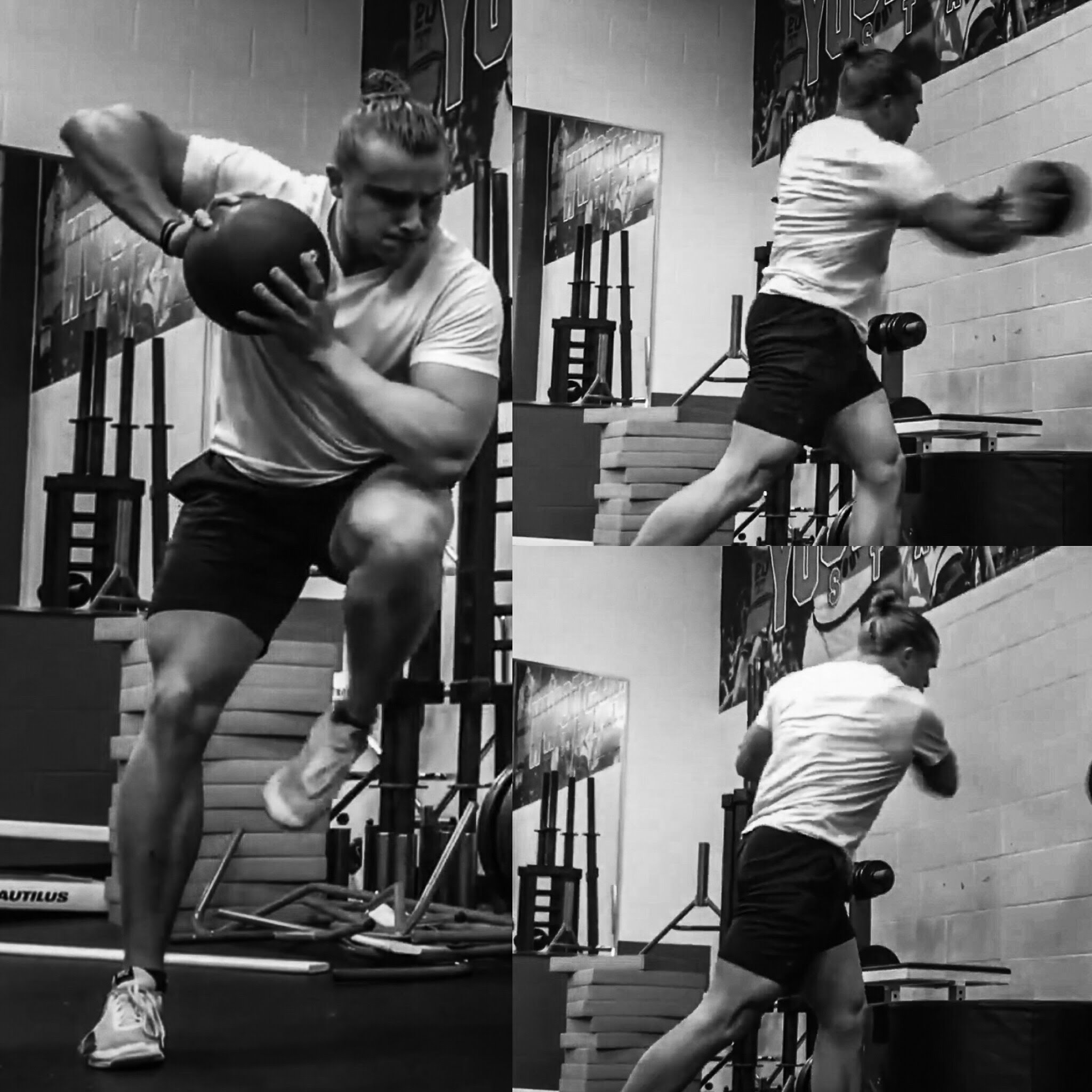
POTENTIATE – DON’T FATIGUE
PAP is meant to increase performance. However, any PAP activity will incur fatigue. Fatiguing muscular contractions impair performance [7-8]. This does the opposite of what we want. There are a few ways to circumvent this:
- Allow time for fatigue to subside before training or testing
- Ensure PAP activities are low repetition (no more than 5 reps on most exercises)
- Ensure PAP activities are low in set number (no more than 3 sets on most exercises)
Following these guidelines will ensure that fatigue has subsided while the potentiation effect stays in place.
OTHER KEYS
- Isometric contractions can work to potentiate explosive performance [9, 10]. This is something covered by Max Schmarzo and Matt Van Dyke – resources here: Isometrics for Performance and Applied Principles of Optimal Power Development.
- PAP works better in men and experienced lifter than it does in women and inexperienced lifters [9].
- PAP effects are greater in those with a higher percentage of type II fibers [11].
PAP is a feature of the Vertical Jump Protocol and Hypertrophy Cluster Protocol, done before every workout. Training goes as follows:
Dynamic Warm-Up (body temperature & mobility)
CNS Warm-Up (Post-Activation Potentiation)
Vertical Jump Test or Start Warm-up Sets
Jumping higher and getting stronger takes time, but with Post-Activation Potentiation you can increase performance immediately, every single day. Here’s videos of PAP options before training to increase strength and vertical jump height:
Share on Facebook & Join the Conversation
REFERENCES
[1] Robbins, D. W. (2005). Postactivation potentiation and its practical applicability: a brief review. Journal of Strength and Conditioning Research, 19(2), 453-8.
[2] Mitchell, C. J. & Sale, D. G. (2011). Enhancement of jump performance after a 5-RM squat is associated with postactivation potentiation. European Journal of Applied Physiology, 111(8), 1957-63.
[3] Dello Iacono, A., Martone, D., & Padulo, J. (2016). Acute effects of drop-jump protocols on explosive performances of elite handball players. Journal of Strength and Conditioning Research, 30(11), 3122-33.
[4] Lima, J. B., Marin, D., Barquilha, G., Da Silva, L., Puggina, E., Pithon-Curi, T., & Hiraba, S. (2011). Acute Effects of Drop Jump Potentiation Protocol on Sprint and Countermovement Vertical Jump Performance. Human Movement, 12(4), DOI:10.2478/v10038-011-0036-4
[5] Masamoto, N., Larson, R., Gates, T., & Faigenbaum, A. (2003). Acute effects of plyometric exercise on maximum squat performance in male athletes. Journal of Strength and Conditioning Research, 17(1), 68-71.
[6] Wilcox, J., Larson, R., Brochu, K. M., & Faigenbaum, A. D. (2006). Acute explosive-force movements enhance bench-press performance in athletic men. International Journal of Sports Physiology and Performance, 1(3), 261-9.
[7] Hodgson, M., Docherty, D., & Robbins, D. (2005). Post-activation potentiation: underlying physiology and implications for motor performance. Sports Medicine (Auckland, N. Z.), 35(7), 585-95.
[8] Lorenz, D. (2011). Postactivation potentiation: An introduction. International Journal of Sports Physical Therapy, 6(3), 234-40.
[9] Rixon, K. P., Lamont, H. S., & Bemben, M. G. (2007). Influence of type of muscle contraction, gender, and lifting experience on postactivation potentiation performance. Journal of Strength and Conditioning Research, 21(2), 500-5.
[10] French, D. N., Kraemer, W. J., & Cooke, C. B. (2003). Changes in dynamic exercise performance following a sequence of preconditioning isometric muscle actions. Journal of Strength and Conditioning Research, 17(4), 678-85.
[11] Hamada, T., Sale, D. G., MacDougall, J. D., & Tarnopolsky, M. A. (2000). Postactivation potentiation, fiber type, and twitch contraction time in human knee extensor muscles. Journal of Applied Physiology (Bethesda, Md.: 1985), 88(6), 2131-7.
